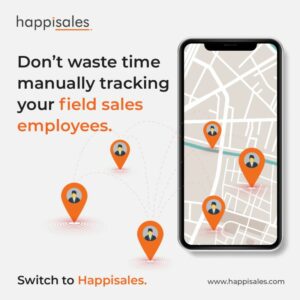The Power of Sales Reporting App: How Our App Boosts Your Revenue
As a business owner or sales professional, you know that sales are the lifeblood of your company. Without sales, your business cannot survive. But simply making sales is not enough. To truly succeed, you need to understand the patterns and trends in your sales data. This is where a sales reporting app comes in.
In this article, we will explore the power of sales reporting and how our app can help you boost your revenue.
First, let’s define what sales reporting is. Sales reporting is the process of analyzing and interpreting sales data to gain insights into your business’s performance. This includes metrics such as revenue, units sold, conversion rates, and customer demographics. Sales reporting can help you identify trends, strengths, weaknesses, and opportunities in your sales process.
Now, let’s look at some of the ways our app can help you boost your revenue through sales reporting.
1. Understand your customers: Our app provides detailed customer data, including demographics, purchasing history, and behaviour. This information can help you tailor your marketing efforts and improve customer retention.
2. Monitor your sales pipeline: Our app allows you to track your sales pipeline in real-time, from initial lead to final sale. This information can help you identify bottlenecks in your sales process and make necessary adjustments to increase efficiency.
3. Forecast future sales: Using historical sales data and trends, our app can help you predict future sales and revenue. This information can help you make informed decisions about inventory, staffing, and marketing budgets.
4. Measure the effectiveness of marketing campaigns: Our app can help you track the success of your marketing campaigns by analyzing the impact on sales. This information can help you optimize your marketing efforts and improve ROI.
5. Analyze customer behavior: Our app can help you understand your customers’ behavior and preferences, such as their buying patterns, purchase frequency, and average order value. By analyzing this data, you can tailor your sales strategy to better meet their needs and increase customer loyalty.
6. Optimize pricing strategy: With our app, you can analyze pricing data and compare it to your sales metrics to optimize your pricing strategy. You can identify which products are underpriced or overpriced, and make adjustments to increase sales and revenue.
7. Identify upsell and cross-sell opportunities: Our app can help you identify opportunities for upselling and cross-selling to increase revenue per customer. You can analyze purchase history data to recommend complementary products or offer discounts on larger orders.
8.Monitor competitor performance: Our app can help you monitor your competitors’ performance and pricing strategies. You can use this data to make informed decisions about your own pricing and marketing strategies, and stay ahead of the competition.
9. Improve forecasting accuracy: Our app can help you improve the accuracy of your sales forecasting by providing real-time data on sales trends and patterns. This can help you make more informed decisions about inventory management and staffing, and avoid stockouts or overstocking.
But how do you get started with sales reporting and our app? Here are some tips:
1. Define your sales metrics: Before you start analyzing your sales data, it’s important to define the metrics that matter most to your business. This may include revenue, units sold, conversion rates, and customer acquisition costs.
2. Set up data tracking: To get the most out of our app, you need to ensure that your sales data is being tracked accurately and consistently. This may involve setting up integrations with your e-commerce platform, CRM, or other sales tools.
3. Analyze your data: Once you have your sales data in our app, it’s time to start analyzing it. Look for patterns, trends, and outliers that can help you make informed decisions about your sales strategy.
4. Take action: The insights you gain from sales reporting are only valuable if you take action on them. Use the information you’ve learned to make changes to your sales process, marketing campaigns, and overall strategy.
5. Set goals: Before you start analyzing your sales data, it’s important to set goals for what you want to achieve. This could be increasing revenue, improving conversion rates, or targeting a new customer segment. Having specific goals in mind will help you focus your sales reporting efforts and measure your progress.
6. Customize your reports: Our app allows you to customize your sales reports to fit your specific needs. Take advantage of this feature by creating reports that are tailored to your business and sales goals. This will help you gain deeper insights into your sales data and make more informed decisions.
7. Collaborate with your team: Sales reporting shouldn’t be a one-person job. Involve your team in the process by sharing reports and insights, and encouraging discussion and feedback. This will help everyone stay on the same page and work together towards your sales goals.
8. Continuously monitor and adjust: Sales reporting is not a one-time task, but an ongoing process. Continuously monitor your sales data and adjust your strategy as needed. This will help you stay ahead of trends and make proactive decisions that can have a positive impact on your revenue.
In conclusion, sales reporting is a powerful tool for businesses of all sizes. By using our app to track and analyze your sales data, you can gain valuable insights into your business’s performance and make informed decisions that can help you boost your revenue. So why wait? Start using our app today and take your sales to the next level!
